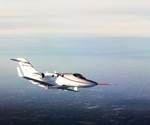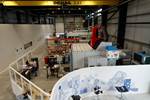General aviation composites: From fairings to fuselages
Market forecaster Chris Red sketches general aviation's long history with composites.
General aviation (GA) has had a long history with composites. Many of the platforms included in this market outlook feature advanced composites in flight-control surfaces and some empennage skins, as well as aerodynamic fairings around the wings and stabilizers. These applications represent from 6 percent to 20 percent of an aircraft’s airframe.
The aircraft’s fuselage and wings each roughly account for 35 percent of the remaining airframe mass. Although GA manufacturers as a group are currently more conservative in their use of composites in primary structures, individual manufacturers were among the first to produce all-composite airframes. These included the Lear Avia (now the Learjet subsidiary of Bombardier Aerospace, Dorval, Quebec, Canada) Learfan 2100 in the early 1980s and the Hawker Beechcraft (Wichita, Kan.) Starship later in that decade. Only a few all-composite aircraft are included in this forecast, but a growing number of OEMs are finding it competitively advantageous to convert fuselages and other major subassemblies from aluminum to composites. On many of these aircraft, composite materials account for 50 percent to as much as 65 percent of the total airframe weight. Although composites continue to penetrate the GA structural materials market, it is important to note that an aluminum fuselage and wing are still the norm, rather than the exception, in GA manufacturing.
Related Content
-
Welding is not bonding
Discussion of the issues in our understanding of thermoplastic composite welded structures and certification of the latest materials and welding technologies for future airframes.
-
The next-generation single-aisle: Implications for the composites industry
While the world continues to wait for new single-aisle program announcements from Airbus and Boeing, it’s clear composites will play a role in their fabrication. But in what ways, and what capacity?
-
Industrializing additive manufacturing in the defense/aerospace sector
GA-ASI demonstrates a path forward for the use of additive technologies for composite tooling, flight-qualified parts.


